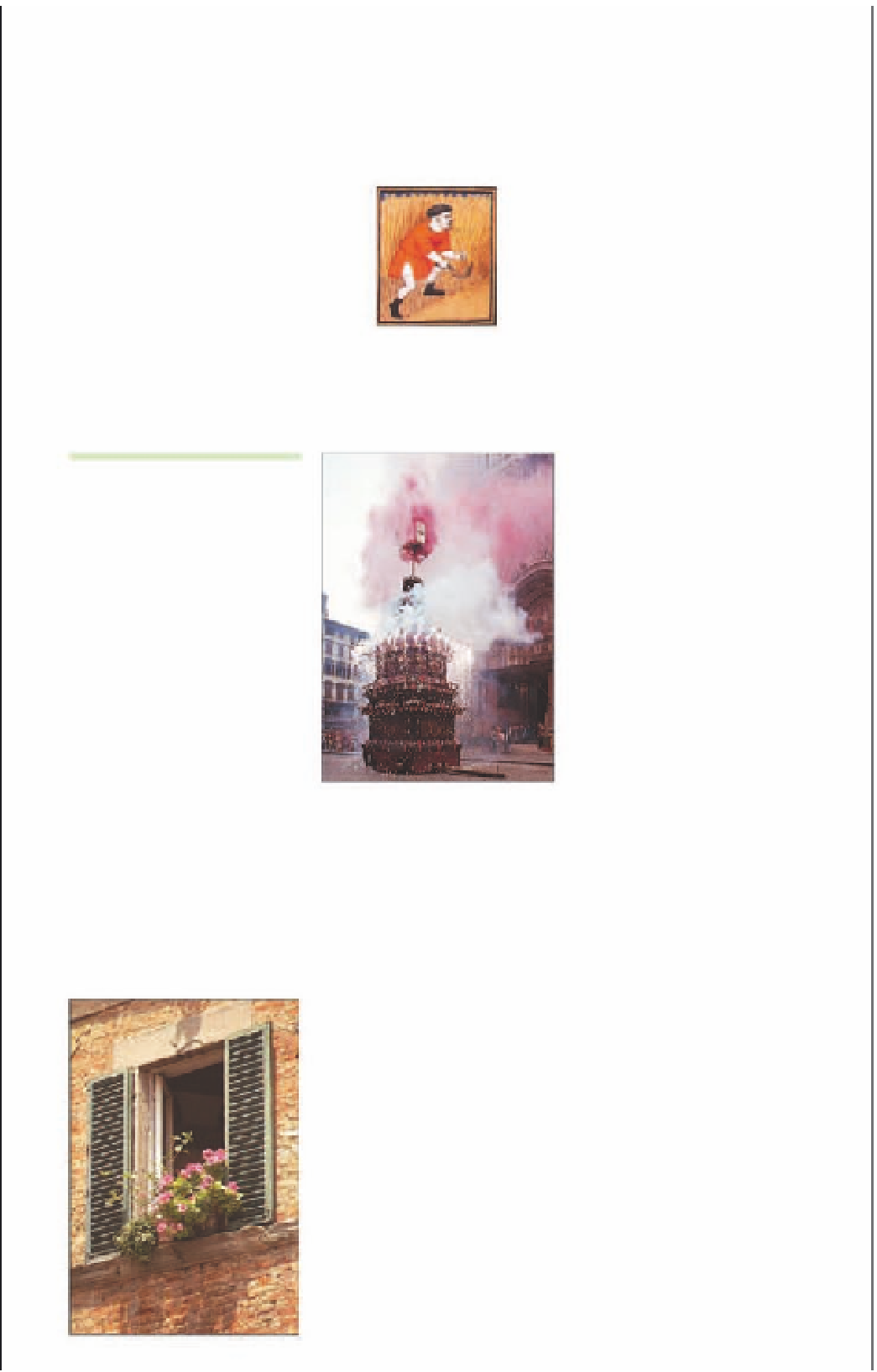Travel Reference
In-Depth Information
FLORENCE AND TUSCANY
THROUGH THE YEAR
Tuscany is most beautiful in May
be avoided, as also July and August,
because of the long queues outside
major museums. During August,
when Tuscans head for the sea,
you will find shops, bars and
restaurants closed. To see
traditional festivities like the
Palio in Siena or Arezzo's Joust
of the Saracen, you will need to
book accommodation a year
ahead, but there are many other
local festivals to enjoy. For information,
enquire at main tourist offices
(see p299)
.
when meadows and waysides are
carpeted with the same
bright flowers that Botticelli's
Flora blithely scatters in
Prima-
vera
, his celebration of spring
(see p82)
. Autumn is equally
colourful, when the beech and
chestnut woods turn a glorious
blaze of seasonal red and gold.
The best months for escaping
the heat and the crowds are May,
September and October. Easter should
A July harvest,
medieval-style
APRIL
SPRING
Sagra Musicale Lucchese
,
(April-early July)
Lucca
(see
pp178-9)
. This extensive
festival of sacred music is
held in the city's numerous
Romanesque churches.
Mostra Mercato Interna-
zionale dell'Artigianato
,
or Exhibition of Crafts
(last
week)
, Fortezza da Basso,
Florence. An important
European exhibition of the
work of artists and artisans.
Tuscany begins to wake from
winter as Easter approaches.
The hillsides are vibrant
with the soft green of new
leaves and the scent of fresh
growth. Even in the cities
there is a sense of renewal as
hanging baskets and window
boxes are displayed outside
from April onwards, and
wisteria and iris bloom in the
public gardens.
Instead of winter's heavy
game dishes, asparagus, a
speciality of the Lucca area,
begins to feature on restau-
rant menus, along with tender
young beans, usually served
in lemon juice and oil.
Except at Easter time, the
streets and main sights are
rarely overcrowded, but the
weather can be unpredictable
and unseasonably wet.
MAY
“Explosion of the Carriage” festival
Maggio Musicale
, Florence.
This is the city's major arts
festival and it now lasts until
late June, with concerts by the
Orchestra Regionale Toscana,
directed by Zubin Mehta, and
other international performers.
The festival has been extended
to include dance (from
classical ballet toa experimen-
tal work) and fringe events.
Festa del Grillo
, or the Cricket
Festival
(first Sunday after
Ascension Thursday)
, Le
Cascine, Florence. The huge
park to the west of Florence,
where Shelley wrote
Ode to
the West Wind
, is the setting
for this event, a celebration of
the joys of spring. Stallholders
used to sell live crickets,
which were then released to
bring good luck. These days
the festival is celebrated
with handmade crickets.
Balestro del Girifalco
, or
Falcon Contest
(first Sunday
after 20 May),
Massa
Marittima
(see p39)
.
MARCH
Carnevale
(four Sundays
leading to Lent and Shrove
Tuesday)
, Viareggio
(see p38)
.
Scoppio del Carro
, or the
Explosion of the Carriage
(Easter Sunday)
, Piazza del
Duomo, Florence. An 18th-
century gilded cart is pulled to
the cathedral doors by white
oxen, and a dove-shaped
rocket swoops down a wire
from above the High Altar
inside to ignite fireworks in the
cart. Ostensibly a celebration of
the Resurrection, the ceremony
has roots in pagan fertility rites.
Many Tuscans still believe
that a successful firework
display means a good harvest.
Festa degli Aquiloni
, or Kite
Festival
(first Sunday after
Easter)
, San Miniato
(see
p163)
. Kite lovers perform
aerial acrobatics on the Prato
della Rocca, the grassy com-
mon above San Miniato.
A window box in bloom: the first
sign of spring in Cortona







































